If you have an African violet that is wilting, has yellow leaves, or is otherwise not looking its best, it may have root rot. Root rot is a common problem with African violets, and it is caused by too much water. African violets need to be watered about once a week, and they should never be allowed to sit in water. If you think your African violet has root rot, there are a few things you can do to save it.
Signs of African Violet Root Rot
If they are blackened or mushy, you will need to trim them away. Keep an eye on the plant and if the leaves continue to yellow or wilt, it may be necessary to trim them back as well. The first step is to remove the plant from its pot and inspect the roots. If you suspect your plant has root rot, it’s important to act quickly. If you think your African violet might have root rot, there are a few signs to look for. The leaves of the plant will start to yellow and wilt, and the stem may become soft and mushy. The roots will also be discolored and may fall off easily when touched. You can then replant the violet in fresh potting mix and water it well. With proper care, your African violet should recover from root rot and continue to thrive.
African Violet Root Rot: Causes and Solutions
African Violet Root Rot: Causes and Solutions
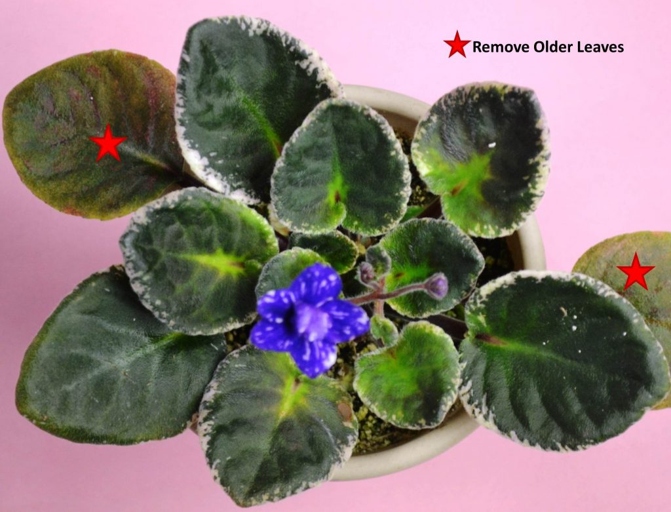
The cause of this problem is typically overwatering. This can be a problem for gardeners who are not familiar with the plant. The solution to this problem is to allow the plant to dry out between watering. This will allow the roots to recover and the plant to grow healthy. When the roots of the plant are constantly wet, they begin to rot. African violet root rot is a common problem for gardeners.
Overwatering Leads to Fungal Growth
If left unchecked, the fungus will spread and eventually kill the plant. When the soil is constantly wet, it provides the perfect environment for fungi to thrive. Overwatering is one of the leading causes of fungal growth on African violets. The first signs of fungal growth are small, brown spots on the leaves.
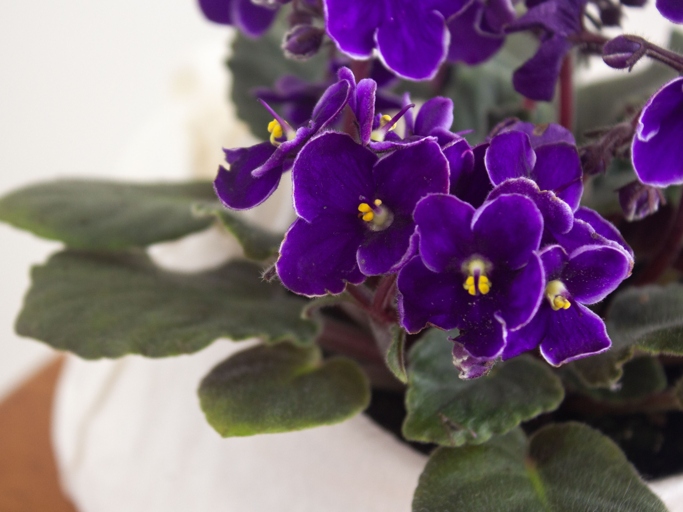
To prevent fungal growth, water African violets only when the soil is dry. If you see signs of fungal growth, remove the affected leaves and increase the amount of airflow around the plant. Allow the water to drain completely before adding more.
Solution:
If you suspect that your African violet has root rot, there are a few things you can do to save it. If the roots are rotted, you will need to trim them away and replant the violet in fresh potting mix. First, check the roots for signs of rot, such as discoloration or mushiness. If the roots are healthy, you can try to save the plant by replanting it in fresh potting mix.
If your African violet is suffering from root rot, the first step is to check the roots for signs of damage. If the roots are rotted, you will need to trim them away and replant the violet in fresh potting mix. If the roots are healthy, you can try to save the plant by replanting it in fresh potting mix.
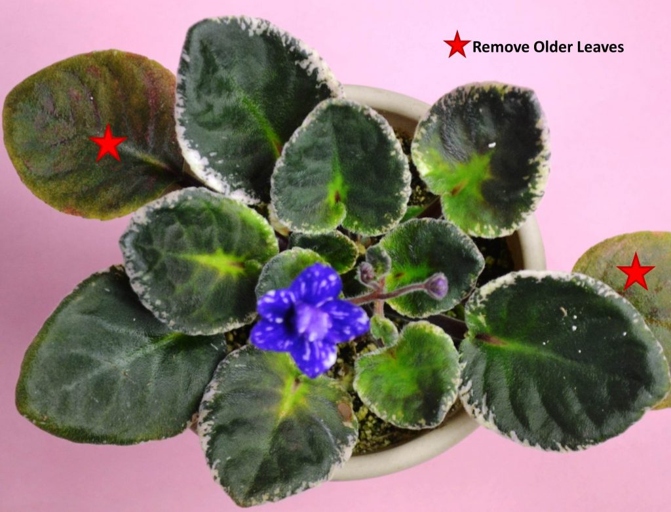
By checking the roots for signs of damage and replanting in fresh potting mix, you can often save the plant. Root rot is a serious problem for African violets, but it can be treated if caught early.
Water Logging Results From Poor Drainage.
This can lead to the roots of plants being waterlogged and unable to get the oxygen they need. Water logging is a problem that can occur when drainage is poor. This can cause the plant to rot and die.
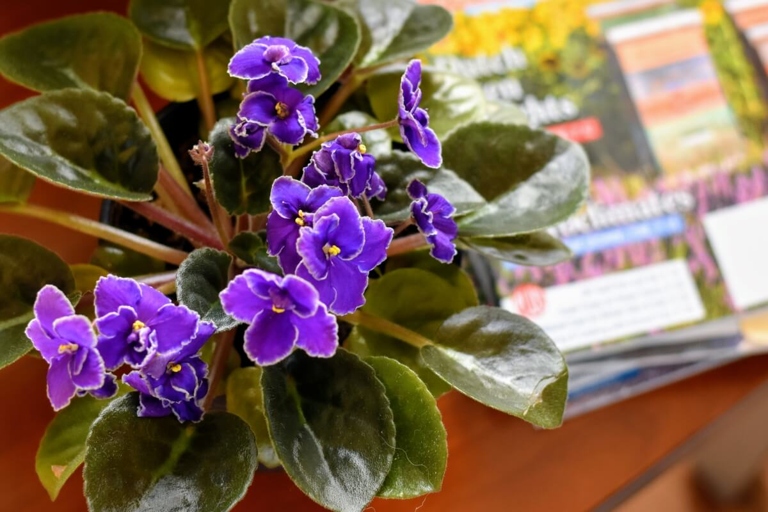
There are a few things you can do to prevent water logging. If you’re growing them in a pot with no drainage holes, you can add a layer of gravel to the bottom of the pot. This will help to keep the roots from sitting in water. Make sure your African violets are in a well-draining pot.
You may also need to trim away any roots that are already rotting. With proper care, your plant should recover from water logging and be able to thrive. Remove the plant from the pot and replant it in a well-draining pot. If your plant is already waterlogged, you’ll need to take action quickly.
Solution:
One possible problem is root rot, which can quickly kill a plant. If you notice that your African violet’s leaves are wilting, discolored, or otherwise not looking healthy, it’s important to take action right away.
This will give it the chance to develop new, healthy roots. Be sure to use a pot that has good drainage, as root rot is often caused by too much moisture. Fortunately, there is a solution: you can replant your African violet in fresh potting mix.
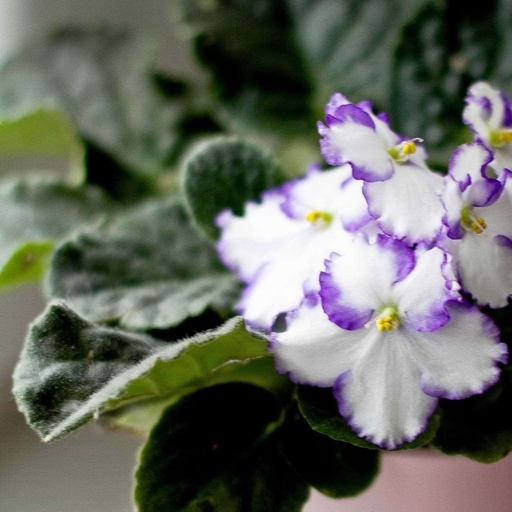
With a little care, you can save your African violet from root rot and enjoy its beautiful blooms for many years to come.
Inconsistent Watering
However, even the most diligent gardeners can sometimes let their plants get too dry or too wet. If you’re an African violet enthusiast, you’re probably well aware of the importance of consistent watering. When this happens, it’s important to take action quickly to save your plant.
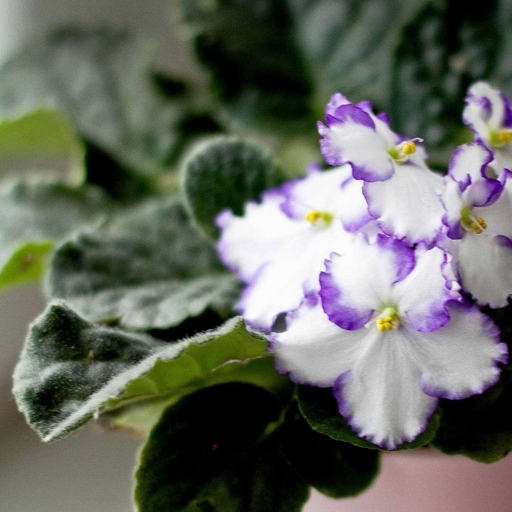
Give it a good drink and make sure to water it more frequently in the future. If you notice that your African violet is wilting or its leaves are beginning to yellow, it’s likely that it’s not getting enough water.
Allow the soil to dry out completely before watering again. On the other hand, if you see that the leaves of your plant are starting to brown or curl, it’s likely that it’s getting too much water. And be sure to empty any water that collects in the saucer beneath the pot.
With a little extra care, you can keep your African violet healthy and thriving.
Solution:
Root rot is a common problem with African violets, and can be caused by overwatering, poor drainage, or using contaminated soil. If you notice that your African violet is wilting, yellowing, or otherwise not looking healthy, it may be suffering from root rot.

If you think your African violet has root rot, the first step is to check the roots. If they are brown and mushy, or if the stem is discolored or soft, your plant has root rot. At this point, you will need to take action to save your plant.
Be sure to water it carefully, and avoid overwatering, to prevent the root rot from returning. The first thing to do is to remove the plant from its pot and inspect the roots. If they are badly damaged, you will need to trim them away. Once you have trimmed away the damaged roots, you can replant the African violet in fresh, sterile potting mix.
Diseases of African Violet
African violets are a beautiful and popular houseplant. You can try to save the plant by trimming away the infected roots and replanting in fresh potting mix. Root rot is caused by a variety of fungi and is the most common disease of African violets. If the roots are black or mushy, they are probably infected with root rot. Symptoms of root rot include yellowing leaves, wilting, and stunted growth. They are also susceptible to a number of diseases, including root rot. If you suspect that your plant has root rot, you should remove it from the pot and inspect the roots. The best way to prevent root rot is to water African violets carefully and to avoid overwatering.
Fungi that cause root rot:
Root rot is a condition in which the roots of the plant are damaged and may eventually die. Fungi thrive in wet conditions, and can cause the roots to rot. Fungi are a type of microorganism that can cause root rot in African violets. This can happen if the plant is overwatered, or if the soil is too wet.
Finally, replant the violet in fresh potting mix and water it carefully. If you suspect that your African violet has root rot, there are a few things you can do to save it. Next, remove the plant from its pot and gently remove the affected roots. First, check the roots to see if they are black or brown. You may need to trim away some of the healthy roots to get rid of all the rot. If they are, then the plant has root rot.
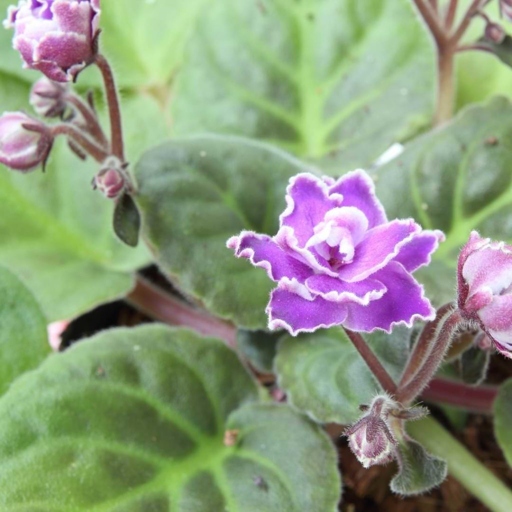
If you catch the problem early, you can save your plant. Root rot can be a serious problem for African violets, but it can be controlled with proper care. Be sure to check the roots regularly, and water the plant only when the soil is dry.
African Violet soft rot
The first step to saving your plant is to identify the problem. If you notice your African violet wilting, even when you’ve recently watered it, it’s likely suffering from root rot. Root rot is a fungal disease that attacks the roots of the plant, preventing it from taking up water.
The best way to confirm that your plant has root rot is to gently remove it from its pot and check the roots. If they’re black or mushy, it’s root rot. If you see yellow or brown leaves, or leaves that are wilting or falling off, these are all signs of root rot.

Be sure to water only when the potting mix is dry to avoid further problems with root rot. Then, replant the African violet in fresh potting mix and water it well. The first step is to trim away any affected roots. Once you’ve confirmed that your plant has root rot, you need to take action to save it.
Solution:
Root rot is a common problem for African violets and other houseplants. It is caused by too much water and can be fatal to your plant. If you notice that your African violet is wilting, yellowing, or its leaves are drooping, it may have root rot.
Be sure to water it carefully, only giving it enough water to moisten the soil. If they are mushy or black, they are probably rotted. Cut away the rotted roots with a sharp knife. There are a few things you can do to save your plant from root rot. First, remove the plant from its pot and check the roots. Next, replant the African violet in fresh potting mix.

With proper care, your African violet will soon be healthy and blooming again. If you catch root rot early, there is a good chance you can save your plant.
Infrequent Repotting
Repotting is a simple process that can help revive your plant. If you notice that your African violet is not blooming as often as it used to, or its leaves are starting to yellow, it may be time to repot it.
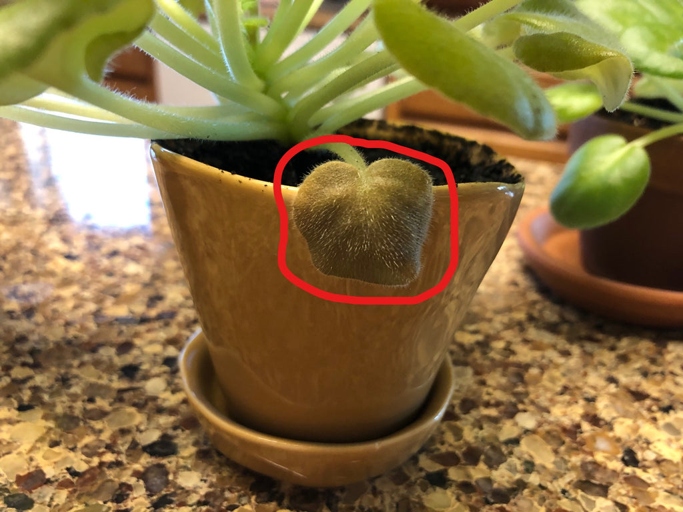
To repot your African violet, first remove it from its current pot. Be sure to use fresh potting mix and water well. Gently loosen the roots and replant in a new pot that is only slightly larger than the old one.
When you do fertilize, use a half-strength solution of African violet fertilizer. African violets are not heavy feeders, so you only need to fertilize every few months.
Repot the plant in fresh potting mix and water well. Remove the plant from its pot and inspect the roots. If they are black or mushy, you will need to trim them away. If you think your African violet has root rot, it is important to act quickly.
Solution:
Next, remove the plant from its pot and gently rinse the roots in water. First, check the roots. If more than half of the roots are affected, it’s probably best to throw the plant out. If they’re mushy or black, it’s likely your plant has root rot. However, if only a few roots are bad, you can try to save the plant by trimming off the affected roots and repotting it in fresh soil. If you think your African violet may have root rot, there are a few things you can do to save it. With proper care, your African violet should recover and bloom again.
Extra-large/ Too small pot
If you notice that your African violet’s leaves are yellowing or wilting, it’s possible that the plant has root rot. Root rot is a common problem in African violets, and it can be caused by a number of factors, including overwatering, poor drainage, and compacted soil.
If they’re brown and mushy, it’s likely that the plant has root rot. If you think your African violet has root rot, the first thing you should do is check the roots. At this point, you’ll need to decide whether to try to save the plant or to start over with a new one.

If you want to try to save your African violet, you’ll need to carefully remove it from the pot and replant it in fresh, well-draining soil. You may also need to trim away any roots that are affected by root rot. Once you’ve replanted your African violet, be sure to water it carefully and only when the soil is dry.
If your African violet is too small for its pot, it may also be susceptible to root rot. In this case, you’ll need to repot the plant in a pot that’s one size larger. Be sure to use fresh, well-draining soil, and water the plant carefully.
By carefully monitoring your plant and taking action if you think it has root rot, you can keep your African violet healthy and blooming for years to come. Root rot can be a serious problem for African violets, but it’s often possible to save the plant if you act quickly.
Solution:
If you notice that your African violet is wilting or the leaves are yellowing, it may have root rot. However, there are some things you can do to save your plant. Root rot is a serious problem that can kill your plant.

If you see mold or mildew on the soil, that is also a sign of root rot. If the roots are mushy or black, they are probably rotting. First, you need to identify the problem.
The first step is to remove the plant from the pot and check the roots. Be sure to disinfect your scissors before and after you use them. If they are black or mushy, you will need to trim them away. Once you have identified the problem, you need to take action to save your plant.
Be sure to water the plant carefully, as too much water can cause the roots to rot. After you have trimmed away the affected roots, you need to replant the African violet in fresh, sterile potting mix.
If you take these steps, you should be able to save your African violet from root rot.
Inconsistent Temperature
Root rot is caused by too much moisture, which can lead to fungal growth. This can be a problem if your plant is in a pot that doesn’t have drainage holes, or if you’re overwatering it. If you notice that the leaves on your African violet are wilting, it could be a sign of root rot.
Cut away any affected roots and repot the plant in fresh potting mix. Remove the plant from its pot and check the roots. If they’re mushy or black, they’re probably rotted. If you think your plant has root rot, it’s important to act quickly.
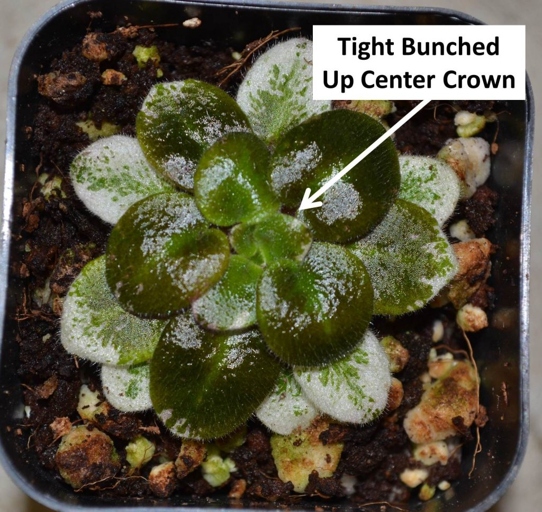
But if the roots are too far gone, it’s best to start over with a new plant. If you catch root rot early, your plant should recover.
Solution:
First, take a look at the roots. With a little care, your African violet should be back to its healthy self in no time. Cut away any rotted roots, being careful not to damage the healthy roots. If you have an African violet that’s suffering from root rot, there are a few things you can do to save it. Be sure to water it regularly, but don’t overwater, as that can lead to more root rot. Then, replant the violet in fresh potting mix. If they’re black or mushy, they’re probably rotted.
How to Save African Violet from Root Rot
The first step to saving your African violet from root rot is to identify the problem. Look for wilting leaves, yellowing leaves, or leaves that are falling off. Root rot is a common problem for African violets, and is caused by too much moisture around the roots. The next step is to remove the plant from its pot and check the roots. Be sure to use a well-draining pot, and water only when the soil is dry. If you see any of these signs, your African violet has root rot. Cut away any infected roots, and repot the plant in fresh potting mix. If the roots are brown or mushy, they are infected with root rot. With proper care, your African violet will soon recover from root rot. If you notice your African violet wilting, despite recent watering, it may have root rot.
Step 1. Stop Watering
If you suspect your African violet has root rot, the first step is to stop watering it. This may seem counterintuitive, but overwatering is often the cause of root rot in the first place. Once the soil is dry, you can remove the affected roots and replant the African violet in fresh, dry soil. Allowing the soil to dry out will help to kill the fungi that is causing the root rot.
Step 2. Remove the Infected Leaves and Parts
One of the first steps is to remove any infected leaves or parts of the plant. This will help to prevent the spread of the disease and give the plant a chance to recover. If you notice that your African violet’s leaves are yellowing, wilting, or otherwise looking unhealthy, it’s time to take action.
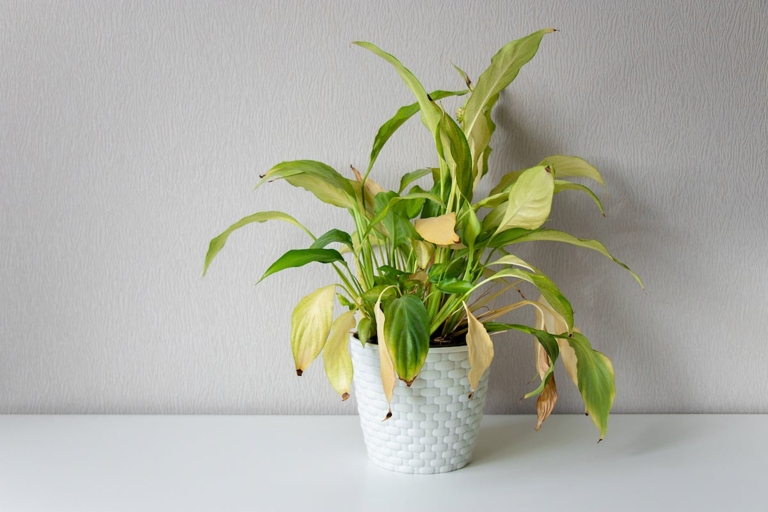
If the infection has spread to the stem, you may need to cut the stem back to healthy tissue. To remove infected leaves, simply snip them off at the base with a sharp pair of scissors. Once you have removed all of the infected leaves and parts, dispose of them in the trash.
With the infected leaves and parts removed, your African violet will have a better chance of recovering. However, it’s important to continue to monitor the plant for signs of disease. If the infection does not improve, you may need to consult with a professional.
Step 3. Unpot the Plant and Dry out the root System
Luckily, there are a few things you can do to save your plant. Root rot is a serious problem that can kill your plant. If you notice your African violet is wilting, yellowing, or its leaves are drooping, it may have root rot.
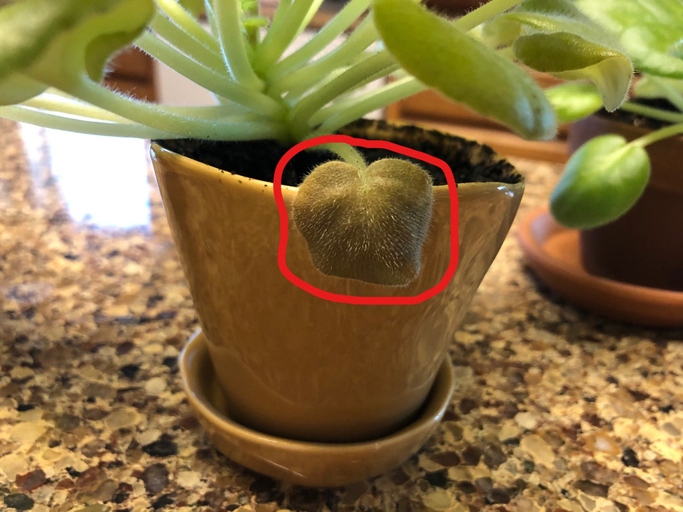
The first step is to unpot the plant and dry out the root system. Once the roots are dry, you can repot the plant in fresh potting soil. This will help to get rid of any excess moisture that is causing the root rot.
If the root rot is severe, you may need to trim away any affected roots. This will help to prevent the rot from spreading to the rest of the plant.
Just be sure to keep an eye on the plant and take action as soon as you notice any problems. With a little bit of care, you can save your African violet from root rot.
Step 4. Trim off the Infected Roots
The first step is to trim off any infected roots. If you notice that your African violet’s roots are starting to rot, it’s important to take action quickly to save your plant. This will help to prevent the spread of the disease and give your plant a chance to recover.
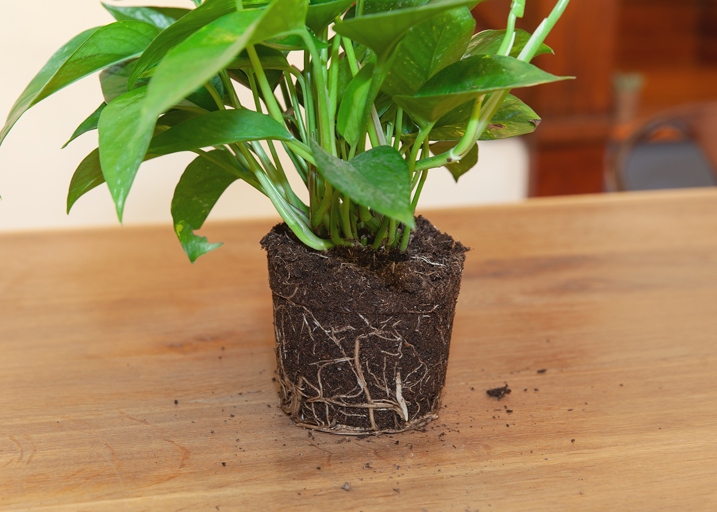
Once you’ve trimmed off the infected roots, it’s important to replant your African violet in fresh, sterile potting mix. This will help to prevent the spread of the disease and give your plant the best chance of recovery.
Step 5. Repot Using New Soil and Pot
Be sure to water the plant regularly and keep an eye on it for any further signs of root rot. The first step is to remove the plant from its pot and inspect the roots. If the roots are black and mushy, they need to be removed. When you notice that your African violet has root rot, it’s important to take action quickly to save your plant. Once you’ve removed the rotten roots, you’ll need to repot the plant using new soil and a new pot.
Step 6. Watering after Repotting
Then, let the plant drain for a few minutes before putting it back in its saucer. Water the plant until the water runs out of the bottom of the pot. Be sure to empty the saucer after the plant has finished draining. After you have repotted your African violet, it is important to water it properly.
Step 7. Care after Repotting
Here are some tips on how to care for your African violet after repotting: After you have repotted your African violet, it is important to take care of it properly to prevent root rot.
1. Water your African violet regularly, but do not over water it.
Place your African violet in a location where it will receive indirect sunlight. 2.
3. fertilize your African violet every month.
Inspect your African violet regularly for signs of root rot, such as yellowing leaves or stunted growth. 4.

By following these tips, you can help your African violet recover from root rot and prevent it from happening again.
Propagating African Violet
However, they can be susceptible to root rot, which can be fatal if not treated. African violets are one of the most popular houseplants, and they’re relatively easy to care for.
If you think your African violet has root rot, the first thing to do is to check the roots. If they’re brown and mushy, it’s likely that the plant has root rot.
To do this, you’ll need to take a healthy cutting from the plant and pot it up in fresh, sterile potting mix. If you catch root rot early, you may be able to save the plant by propagating it.

Once you’ve potted up the cutting, water it well and keep it in a warm, bright spot. With a little luck, your African violet will soon be back to its old self.
To propagate an African Violet, you will need
To do this, you will need to take a cutting from the plant and place it in water. To propagate an African Violet, you will need to take a leaf from the plant and place it in water. You can also propagate African Violets from stem cuttings. The cutting will then form its own roots and a new plant will grow. The leaf will then form its own roots and a new plant will grow.
How to Propagate African Violets from a Leaf:
If you think your plant has root rot, it is important to take action immediately. Root rot is a fungal disease that can kill your plant. African violets are a beautiful and popular houseplant. They are relatively easy to care for, but can be susceptible to root rot.
One way to save your plant is to propagate it from a leaf. This is a relatively simple process that anyone can do. First, you will need to take a healthy leaf from your plant. Water the mix well and place the pot in a warm, sunny location. Cut the leaf off at the base, being careful not to damage the stem. Next, place the leaf in a pot of African violet potting mix.

This is a slightly more difficult process, but can be done if you are experienced with propagating plants. Within a few weeks, you should see new growth emerging from the leaf. African violets can also be propagated from stem cuttings. Once the new plant is established, you can transplant it into its own pot.
Treating root rot with Chemical Fungicide
Root rot is a serious problem for African violets, as it can quickly kill the plant. However, there is hope for plants that are affected by root rot. A chemical fungicide can be used to treat the plant and save it from death.
The fungicide is then applied to the roots and the plant is replanted in fresh soil. To treat root rot with a chemical fungicide, the plant must be removed from the pot and the roots must be cleaned. The plant should be kept moist and warm while it recovers.

Root rot can be a devastating problem, but with quick action and the right treatment, your African violet can be saved.
Homemade fungicide for root rot
Root rot is a common problem for African violets, but it can be treated with a homemade fungicide. If you notice your African violet wilting or its leaves turning yellow, it may have root rot.
To make the fungicide, mix one tablespoon of baking soda with two tablespoons of water. Apply the mixture to the affected areas of the plant, being sure to avoid the leaves.
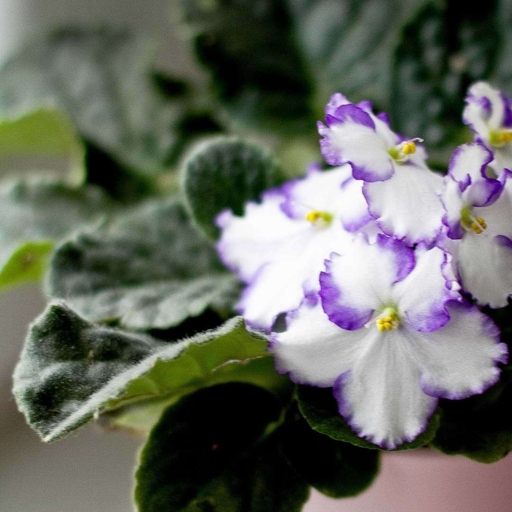
Root rot can be a serious problem for African violets, but with treatment, your plant can recover.
Cinnamon
Cinnamon can be used in a variety of ways, including as a spice for baking or cooking, as a tea, or in capsule form. It has a long history of use in traditional medicine and as a culinary spice. Cinnamon is known for its purported health benefits, including its ability to help treat digestive issues, relieve pain, and boost immunity. Cinnamon is a spice that is derived from the inner bark of trees in the genus Cinnamomum.

Cut away any affected roots with a sharp knife and repot the plant in fresh, sterile potting mix. If you suspect your African violet has root rot, there are a few things you can do to save it. Finally, add a teaspoon of cinnamon to the potting mix, which has antimicrobial properties and can help prevent the spread of root rot. If they are brown or black and mushy, then they are likely affected by root rot. First, remove the plant from its pot and inspect the roots. Be sure to water the plant carefully, as too much or too little water can exacerbate root rot.
Chamomile
With proper care, your African violet should recover and continue to thrive. If you have an African violet that’s suffering from root rot, there are a few things you can do to save it. Once the roots are dry, you can replant the African violet in fresh potting mix. Root rot is usually caused by too much water or humidity. If the root rot is severe, you may need to trim away the affected roots and leaves. The leaves of the plant will start to yellow and the stems will soften. First, identify the problem. If you catch the problem early, you can save the plant by removing it from the pot and letting the roots dry out.
Charcoal
If you notice your African violet’s leaves turning yellow and wilting, it may be a sign of root rot. Root rot is a common problem in African violets, and can be caused by overwatering, poor drainage, or a lack of air circulation.
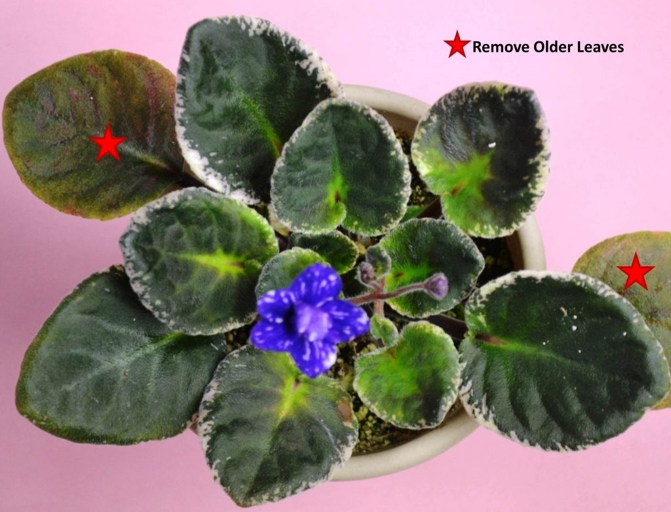
If they are brown and mushy, it’s likely that your plant has root rot. To check for root rot, gently remove your plant from its pot and inspect the roots.
However, if the root rot is severe, it’s best to start with a new plant. If you catch root rot early, you may be able to save your plant by trimming away the affected roots and repotting it in fresh, well-draining potting mix.
To prevent root rot in the future, be sure to water your African violet only when the soil is dry to the touch and never allow the plant to sit in water. Good air circulation is also important, so be sure to choose a pot with drainage holes and avoid overcrowding your plants.
How to Prevent African Violet Root Rot
The roots of the plant will start to turn brown and mushy. If you have an African violet that is suffering from root rot, there are some things you can do to save it. Root rot is caused by too much water and not enough drainage. First, you need to identify the problem. If you see this, you need to take action immediately.
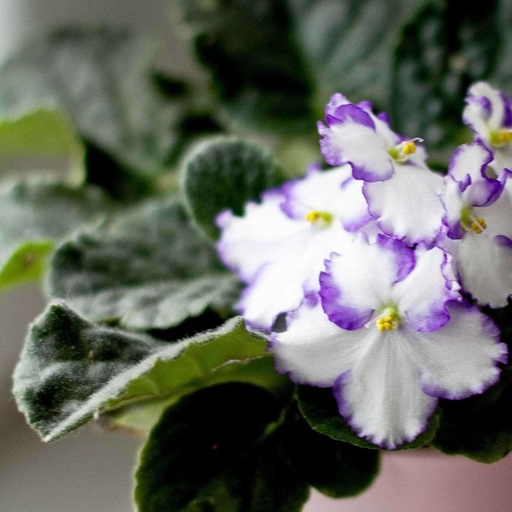
If you catch the root rot early enough, your plant should recover. Be sure to water it sparingly, and only when the soil is dry. Then, you need to replant it in a pot with fresh, dry soil. To save your plant, you need to remove it from the pot and shake off any excess water.
Frequently Asked Questions
1. What is root rot?
Root rot is a condition that causes the roots of a plant to decay. This can be caused by a number of things, including overwatering, poor drainage, or a lack of oxygen.
2. How can I tell if my African violet has root rot?
There are a few signs that your African violet may have root rot, including yellow or brown leaves, wilting, and a soft or mushy stem. If you suspect that your plant has root rot, it’s important to act quickly.
3. How can I save my African violet from root rot?
The first step is to improve the drainage of the pot. If the pot doesn’t have drainage holes, add some. Then, water the plant less frequently, and make sure that the potting mix is dry before watering again. You may also need to repot the plant in fresh potting mix.
4. Can I treat root rot myself?
If you catch root rot early, you may be able to treat it yourself. However, if the plant is severely affected, it’s best to take it to a professional.
5. How can I prevent root rot in the future?
There are a few things you can do to prevent root rot, including not overwatering, making sure the pot has good drainage, and using a well-aerated potting mix.
Final thoughts
If you think your African violet may have root rot, there are a few things you can do to save it. First, check the roots. If they’re mushy or black, it’s likely your plant has root rot. Next, trim away any dead or dying leaves, stems, or roots. Finally, replant your African violet in fresh, well-draining potting mix. With a little care, you can bring your plant back to health.
